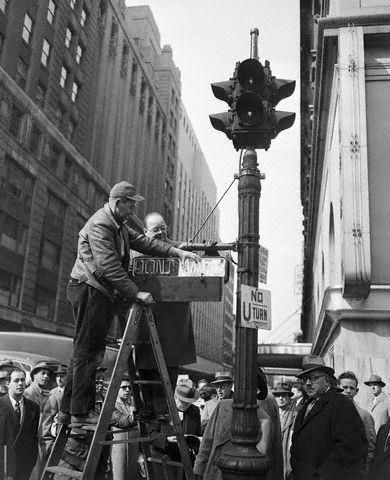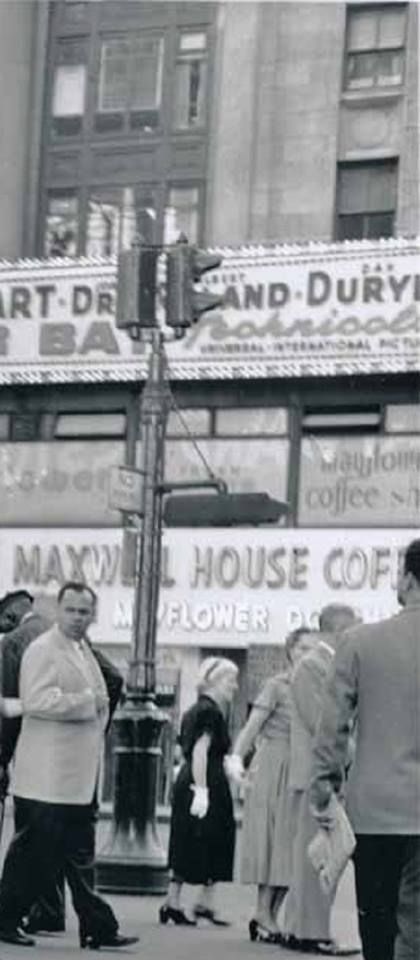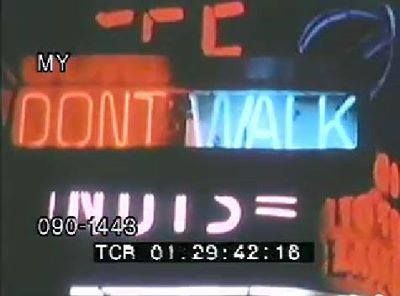In February of 1952, New York City's Department of Traffic revealed the first pedestrian signals that showed "DONT WALK" and "WALK."
Manufactured by the Crouse-Hinds company, the units were horizontal in appearance, and a handful of this kind were in service at Times Square in the borough Manhattan. One of the first handful (as shown in the photograph below) was installed by then traffic commissioner T.T. Wiley and a worker.

At the time, these pedestrian signals functioned with two-section (red and green) traffic signals, and they were attached to the existing poles the traffic signals were mounted on. A rather simple arm/guy wire set-up held each pedestrian signal like so.

The sequence of this pedestrian signal functioned exactly like the "Barnes dance," which future New York City traffic commissioner Henry Barnes would experiment with to a great extent at many New York City intersections. The first direction of vehicular traffic had the right-of-way, while pedestrians waited to cross. Once the first phase terminated, then the second platoon of vehicles on the cross street were allowed to proceed. During an all-red, pedestrians were then allowed to cross when the green "WALK" indication appeared illuminated. It lasted 11 seconds, which was then followed by a flashing "DONT WALK" clearance. Pedestrians had ample to time to cross safely at this time. Then a steady "DONT WALK" indication appeared. The entire cycle (based on 60 seconds) repeated itself.
Because of the design of the pedestrian signal, some New Yorkers were rather confused by the red "DONT" and green "WALK" both lit at the same time. T.T. Wiley would realize this was a failure to the improvement of the safety of pedestrians, and, as a result, he discontinued future production of the Crouse-Hinds units, not to mention removed those that were already in service by 1955.

Thus, the new design (from T.T. Wiley's staff) and introduction of the first bi-modal neon units from Winko-Matic, which would prove to be successful at the time of their debut.


 Please register to participate in our discussions with 2 million other members - it's free and quick! Some forums can only be seen by registered members. After you create your account, you'll be able to customize options and access all our 15,000 new posts/day with fewer ads.
Please register to participate in our discussions with 2 million other members - it's free and quick! Some forums can only be seen by registered members. After you create your account, you'll be able to customize options and access all our 15,000 new posts/day with fewer ads.